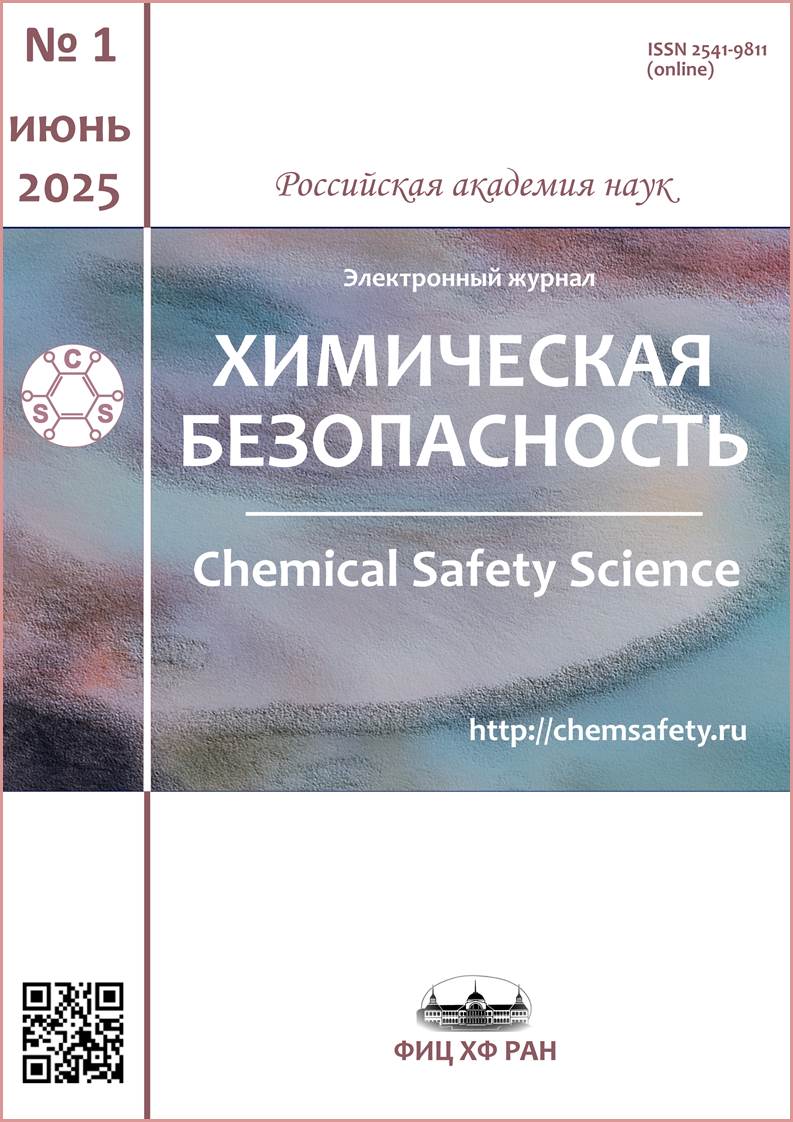Monitoring of new binary systems for caffeine extraction from natural raw materials
Abstract
The article summarizes the results of monitoring new binary systems for caffeine extraction (dispersion method) from natural raw materials using Camellia sinesis L. leaves and Coffea arabica L. beans as an example. Tea (Camellia sinesis L.) in the Russian Federation is grown in the Krasnodar region, so modification of methods of caffeine maceration from this raw material will certainly increase the potential of Russian production of this alkaloid. In turn, such methods, as more environmentally friendly, will eventually be able to replace the existing methods of condensation of cyanide-containing reagents and amides with urea (Traube method). Binary combinations of "ethyl acetate/aliphatic alcohol" in various ratios were used as the organic phase of the new, more economically advantageous systems, and the classical chloroform extraction method was chosen as the comparison method. In this research, the aliphatic acyclic saturated alcohols in different structural forms were analyzed as the second component of the organic phase of the extraction system. As a result, it has been proven that new extraction systems allow for a more complete extraction of caffeine from natural components. Modification of the extraction process will produce pure and environmentally friendly caffeine from natural raw materials, and will provide an economically suitable caffeine production process for the domestic producer.
References
Chernomor, E. A., Zatsepina, A. A. & Nenakhov, I. G. (2021). The life story of Paracelsus - a Swiss alchemist, physician, philosopher and founder of iatrochemistry. Molodezhnyy innovatsionnyy vestnik, 10(S2), 211‒213. (in Russ.)
Zlotin, S. G., Egorova, K. S., Ananikov, V. P., Akulov, A. A., Varaksin, M. V., Chupakhin, O. N. …& Zolotukhina A.V. (2023). The green chemistry paradigm in modern organic synthesis. Russian Chemical Reviews, 92(12), RCR5104. (in Russ.)
Karmishin, A. M., Eleev, Yu. A., Glukhan, E. N., Abashkin, I. A., Kondratiev, V. B., Kuchinsky, E. V. … & Kutkin A.V. (2023). On the kinetics of extraction from plant materials and the optimal extraction time. Chemistry and Technology of Organic Substances, 3(27), 36‒53. (in Russ.)
Platonov, B. G., Valentinov, G. T., Sukhikh, V. V., Dunaev, V. A. & Volochaeva, M. V. (2021). Chemical composition of n-hexane extract of thyme herb (Thymus serpylluml., Lamiaceae family). Journal of new medical technologies, 15(5), 54‒63. https://doi.org/10.24412/2075-4094-2021-5-3-2. (in Russ.)
Mishina, N. M. & Zykova, I. V. (2024). On the conditions of extraction of humic acids from sapropels with a high proportion of organic matter. Vestnik molodykh uchenykh Sankt-Peterburgskogo gosudarstvennogo universiteta tekhnologii i dizayna, (3), 3‒8. (in Russ.)
Khabieva, N. A., Lyust E. N.& Timerzyanov, M. I. (2024) Development of methods for isolating carbamazepine from biological objects. Vestnik Smolenskoy gosudarstvennoy meditsinskoy akademii, 23(1), 214‒222. https://doi.org/10.37903/vsgma.2024.1.28. (in Russ.)
Korenman, I. M. (1977) Extraction in the analysis of organic substances. Moscow: Chemistry. 200 p.
Bondareva, E. A., Reshetnikov ,D. V., Burova, L. G., Patrushev, S. S., Zakharova, L. N., Evstropov, A. N. …& Shul′ts E. E. (2023). Study of antibacterial properties of new caffeine derivatives against opportunistic bacteria in vitro. Journal of Siberian Medical Sciences, 7(1), 45‒52. https://doi.org/10.31549/2542-1174-2023-7-1-45-52.
Kadhim, A., Betti, N., H. A. Al-Bahrani, Al-Ghezi, M. K. S., Gaaz, T., Kadhum, A. H. …& Alamiery, A. (2021). A mini review on corrosion, inhibitors and mechanism types of mild steel inhibition in an acidic environment. International Journal of Corrosion and Scale Inhibition, 10(3), 861‒884. https://doi.org/10.17675/2305-6894-2021-10-3-2.
Gardiner, C, Weakley, J, Burke, LM, Roach, GD, Sargent, C, Maniar, N. …& Halson, S.L. (2023). The effect of caffeine on subsequent sleep: A systematic review and meta-analysis, Sleep Med Rev.;69:101764. https://doi.org/10.1016/j.smrv.2023.101764.
Kochman, J., Jakubczyk, K., Antoniewicz, J., Mruk, H. & Janda, K. (2020) Health Benefits and Chemical Composition of Matcha Green Tea: A Review. Molecules, 26(1), 85. https://doi.org/10.3390/molecules26010085.
Tinkov, O. V., Grigoriev, V. Yu. & Grigorieva, L. D. (2020). QSPR analysis of the bioconcentration ability of individual avermectins. Khimicheskaya Bezopasnost’ = Chemical Safety Science, 4(2), 8‒23. https://doi.org/10.25514/CHS.2020.2.18001 (in Russ.)
Nilova, L. P., Malyutenkova, S. M., Tverskoy, V. R. & Mukhutdinov, R. R. (2024). Coffee: Caffeine Content and Antioxidant Activity at Different Extraction Stages. Vestnik KrasGAU, 10(211), 192‒199. https://doi.org/10.36718/1819-4036-2024-10-192-199. (in Russ.)
Caracostea, L. M., Sîrbu, R. & Buşuricu, F. (2021). Determination of Caffeine Content in Arabica and Robusta Green Coffee of Indian Origin. European Journal of Natural Sciences and Medicine, 4(1), 67‒77. https://doi.org/10.26417/425qba31z.
Teeuwen, H.W., Elbers E.L. & J.M. van Rossum (1991). Rapid and sensitive gas-chromatographic determination of caffeine in blood plasma, saliva, and xanthine beverages. Mol. Biol. Rep, 15(1), 1‒7.
Pivovar, M. L. & Zhebentyaev, A. I. (2008). Determination of quantitative characteristics of xanthine derivatives extraction with various organic solvents. Vestnik farmatsii, 4(42), 64‒71. (in Russ.)
Minakov, D. V., Savrasov, E. S., Bazarnova, N. G., Tikhonov, S. L. & Egorova, E. Yu. (2024) Extraction of biologically active compounds of Cordyceps militaris under ultrasound exposure. Khimiya rastitel′nogo syr′ya, (2), 355‒364. https://doi.org/10.14258/jcprm.20240214209. (in Russ.)
Goronovsky, I. T., Nazarenko, Yu. P. & Nekryach, E. F. (1987). Brief Handbook of Chemistry. Kyiv.: NAUKOVA DUMKA, 480 p.
Pharmacopoeia. Edition XV. 2. Pharmaceutical substances / 2.1. Pharmaceutical substances of synthetic origin / Caffeine. https://pharmacopoeia.regmed.ru/pharmacopoeia/izdanie-15/2/2-1/kofein/?sphrase_id=331469 (date of access 12.04.2025).
Korenman, Ya. I. (2010) Extraction of organic compounds: general patterns of application in analysis. J. Analyt. Chemistry, 57(10), 1064–1071.
Bekhterev, V. N. (2020). Extraction freezing of caffeine from aqueous solutions under the action of a centrifugal force field. J. Analyt. Chemistry, 75(9), 771–776.
Kharkova, O. A. & Grzhibovsky, A. M. (2014). Comparison of two unrelated samples using the STATA statistical software package: nonparametric criteria. Human Ecology, (4), 60–64.
Pivovar, M. L. & Zhebentyaev, A. I. (2010). Study of the extraction of methyl xanthine derivatives by binary mixtures organic solvents. Vestnik farmatsii, 1(47), 25‒33. (in Russ.).
Copyright (c) 2025 Alexander S. Melnikov, and Svetlana A. Meshcheryakova

This work is licensed under a Creative Commons Attribution-NonCommercial 4.0 International License.












